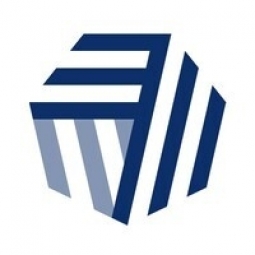技术
- 功能应用 - 企业资源规划系统 (ERP)
- 功能应用 - 库存管理系统
适用行业
- 服装
- 零售
适用功能
- 销售与市场营销
- 仓库和库存管理
用例
- 库存管理
- 零售店自动化
服务
- 系统集成
关于客户
Cath Kidston 是一家知名时装零售商,以其丰富的怀旧手绘花卉印花时装、箱包、童装和家居产品线而闻名。该公司由时装设计师 Cath Kidston 创立,总部位于伦敦。该公司于 1993 年从一家零售店起步,到 2014 年在全球拥有 136 家零售店。该公司通过自有品牌店和 John Lewis 等高端零售商销售复古和英国风格的时尚服装和配饰。 2010年,该公司的多数股权被出售给私募股权投资者,从而实现进一步增长。然而,2020 年 Covid-19 大流行的爆发迫使该公司关闭了英国和日本的 60 家零售店,并转向电子商务。
挑战
Cath Kidston 是一家著名时装零售商,以其怀旧手绘花卉印花时装、箱包、童装和家居用品而闻名,在 Covid-19 大流行后面临着重大挑战。该公司从 1993 年的一家零售店发展到 2014 年在全球拥有 136 家零售店,但由于商业挑战,被迫在 2020 年初关闭了英国和日本的 60 家零售店。这种情况可能意味着大多数实体企业的终结,但 Cath Kidston 认为这是一个新开始的机会。该公司决定重新推出该品牌作为直接面向消费者 (D2C) 的电子商务业务,同时保留其 B2B 特许经营和批发业务。然而,这一转变并非没有挑战。该公司现有的企业资源规划软件(ERP)不仅昂贵、复杂,而且缺乏技术文档,集成困难。
解决方案
Cath Kidston 转向库存和订单管理解决方案 Cin7,以促进其向成熟的电子商务企业转型。在将 Cin7 基于云的功能集与竞争对手的产品进行比较后,Cath Kidston 于 2020 年 4 月实施了该软件。Cin7 因其强大的功能而被选中,用于管理公司的销售、库存和履行,无论是在电子商务还是在其剩余的全球实体店中。 -迫击炮位置。 Cin7 与特定于零售和履行的其他应用程序的 700 多个内置集成在 Cath Kidston 的非凡转型中发挥了重要作用。迁移到 Cin7 使 Cath Kidston 能够进行跨渠道库存调节,确保零售、批发和在线商店的库存数量保持一致。它还使他们能够连接到英国和香港的主要履行仓库,提供真正的端到端可见性。此外,Cin7 还提供了可靠的库存真实来源,这是他们以前的 ERP 软件所缺乏的功能。
运营影响
数量效益

Case Study missing?
Start adding your own!
Register with your work email and create a new case study profile for your business.
相关案例.

Case Study
Fire Alarm System and Remote Monitoring Sytem
Fire alarm systems are essential in providing an early warning in the event of fire. They help to save lives and protect property whilst also fulfilling the needs of insurance companies and government departments.Fire alarm systems typically consist of several inter-linked components, such as smoke detectors, heat detector, carbon monoxide, manual call points, sounders, alarm and buzzer. The fire alarm system should give immediate information in order to prevent the fire spread and protect live and property.To get maximum protection a shoe manufacturer in Indonesia opted for a new fire alarm system to monitor 13 production sites spread over 160 hectars. Although the company had an existing fire alarm system, it could not be monitored remotely.It was essential that the new system would be able to be monitored from a central control room. It needed to be able to connect to the existing smoke detector and manual call point. Information should be easily collected and passed on to the Supervisory Control and Data Acquisition (SCADA) system. Furthermore, the system should have several features such as alarm management, auto reporting, being connected to many client computers without additional cost, and run 24/7 without fails. The company also needed a system which could be implemented without changing the architecture of the existing fire alarm system.

Case Study
IoT Applications and Upgrades in Textile Plant
At any given time, the textile company’s manufacturing facility has up to 2,000 textile carts in use. These carts are pushed from room to room, carrying materials or semi-finished products. Previously, a paper with a hand-written description was attached to each cart. This traditional method of processing made product tracking extremely difficult. Additionally, making sure that every cart of materials or semi-finished products went to its correct processing work station was also a problem. Therefore, the company desired an intelligent solution for tracking assets at their factories. They also wanted a solution that would help them collect process data so they could improve their manufacturing efficiency.

Case Study
Improving Production Line Efficiency with Ethernet Micro RTU Controller
Moxa was asked to provide a connectivity solution for one of the world's leading cosmetics companies. This multinational corporation, with retail presence in 130 countries, 23 global braches, and over 66,000 employees, sought to improve the efficiency of their production process by migrating from manual monitoring to an automatic productivity monitoring system. The production line was being monitored by ABB Real-TPI, a factory information system that offers data collection and analysis to improve plant efficiency. Due to software limitations, the customer needed an OPC server and a corresponding I/O solution to collect data from additional sensor devices for the Real-TPI system. The goal is to enable the factory information system to more thoroughly collect data from every corner of the production line. This will improve its ability to measure Overall Equipment Effectiveness (OEE) and translate into increased production efficiencies. System Requirements • Instant status updates while still consuming minimal bandwidth to relieve strain on limited factory networks • Interoperable with ABB Real-TPI • Small form factor appropriate for deployment where space is scarce • Remote software management and configuration to simplify operations

Case Study
Digital Retail Security Solutions
Sennco wanted to help its retail customers increase sales and profits by developing an innovative alarm system as opposed to conventional connected alarms that are permanently tethered to display products. These traditional security systems were cumbersome and intrusive to the customer shopping experience. Additionally, they provided no useful data or analytics.

Case Study
How Sirqul’s IoT Platform is Crafting Carrefour’s New In-Store Experiences
Carrefour Taiwan’s goal is to be completely digital by end of 2018. Out-dated manual methods for analysis and assumptions limited Carrefour’s ability to change the customer experience and were void of real-time decision-making capabilities. Rather than relying solely on sales data, assumptions, and disparate systems, Carrefour Taiwan’s CEO led an initiative to find a connected IoT solution that could give the team the ability to make real-time changes and more informed decisions. Prior to implementing, Carrefour struggled to address their conversion rates and did not have the proper insights into the customer decision-making process nor how to make an immediate impact without losing customer confidence.








